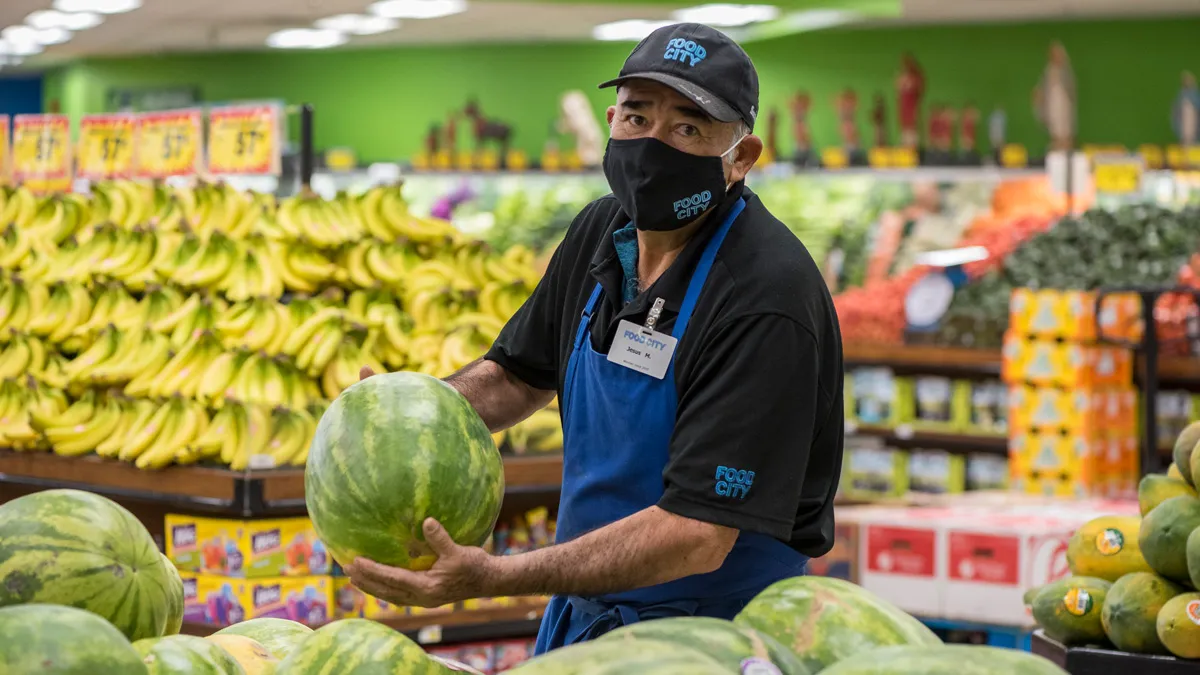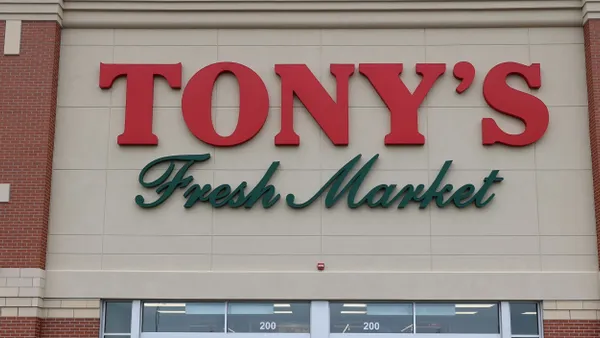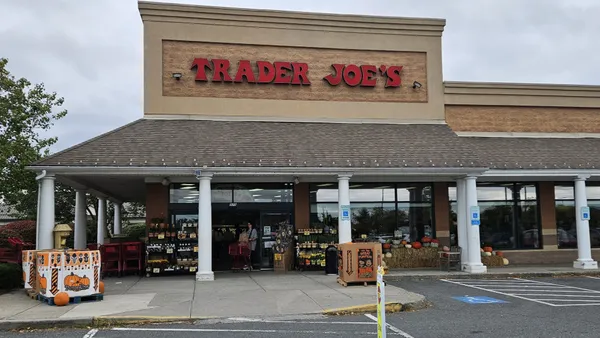Dive Brief:
- Employment in food and beverage stores declined in October, with the industry shedding 2,700 jobs during the month, according to preliminary data released Friday by the U.S. Bureau of Labor Statistics (BLS).
- Restaurants and bars added 6,000 positions in October, a pace that was down sharply from the prior month when the sector brought on 10 times as many new jobs.
- The unemployment rate ticked up slightly in October, to 3.7%, while the job market generated 261,000 new nonfarm jobs — about the same as in September — the BLS reported.
Dive Insight:
Grocery store payrolls contracted in October for the first time since May, when the industry lost 8,300 positions, the sharpest monthly decline the sector has recorded so far this year.
After hitting that low point, grocers began adding jobs at an accelerating clip during each subsequent month until changing course in September, when employment growth in the industry slowed significantly ahead of October’s decline. The food-retailing industry accounted for 3.19 million jobs last month, just over one-fifth of the approximately 15.8 million jobs in the retail sector as a whole.
Supermarket operators have been hiring aggressively as they have looked to staff stores and other facilities to meet pandemic-stoked demand from grocery shoppers. On Friday, Kroger — which has been on a hiring spree this year — said it will hold a virtual career expo aimed at veterans and military families on Thursday, although it did not indicate how many workers it is looking to bring on through the event.
While grocery stores saw employment drop in October, other parts of the economy posted large gains in the number of people they employ. The healthcare industry brought on 53,000 new positions, for example, while employers in the professional and technical services sector added 43,000 jobs, the BLS said.
The job market has remained strong in 2022 even as inflation, rising interest rates and other headwinds have posed challenges to the economy. Monthly job growth has averaged 407,000 through the first 10 months of the year, compared with 562,000 per month in 2021, the BLS said. Meanwhile, unemployment claims have remained relatively low, the U.S. Department of Labor said Thursday, indicating that employers still face strong competition when recruiting workers.
In a sign that the economy may be slowing, consumer spending on goods like food and beverages was off in the third quarter of 2022 even as gross domestic product (GDP), a key measure of economic activity, rose, according to estimated statistics released in late October by the federal Bureau of Economic Analysis. GDP for the quarter increased 2.6%, reversing negative growth in Q1 and Q2 of 2022, according to the agency.













